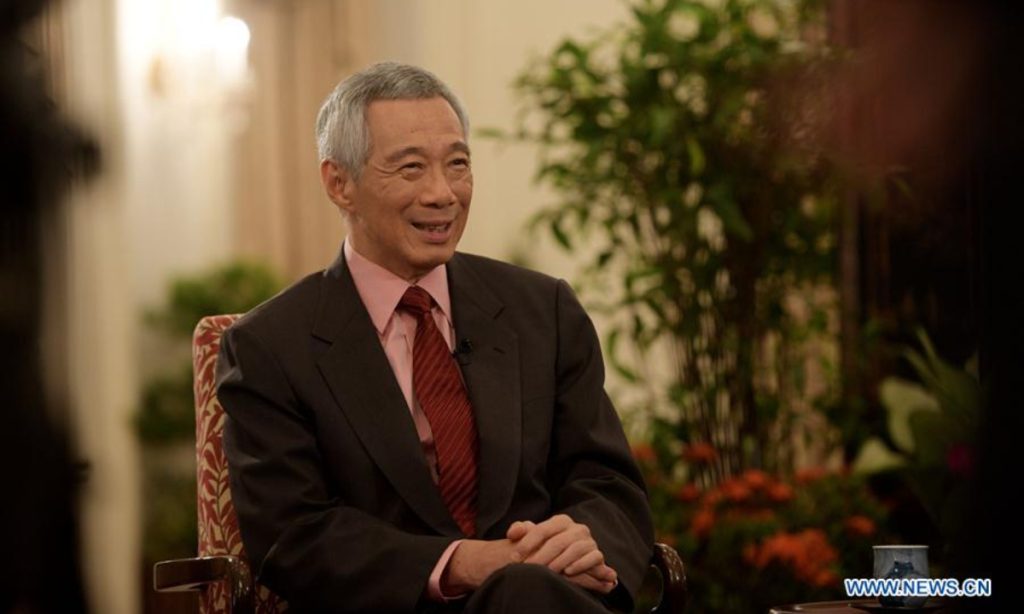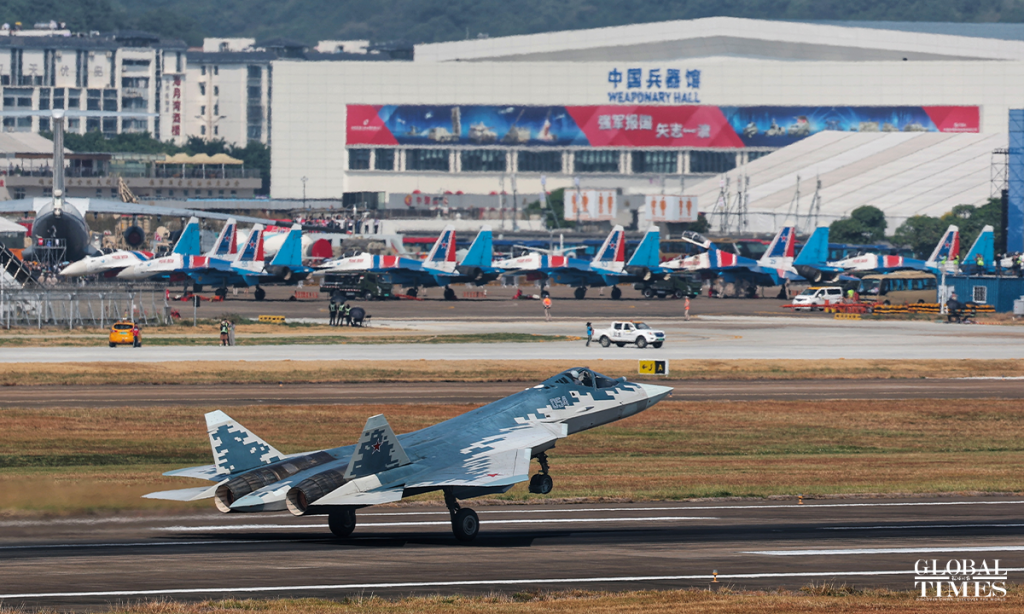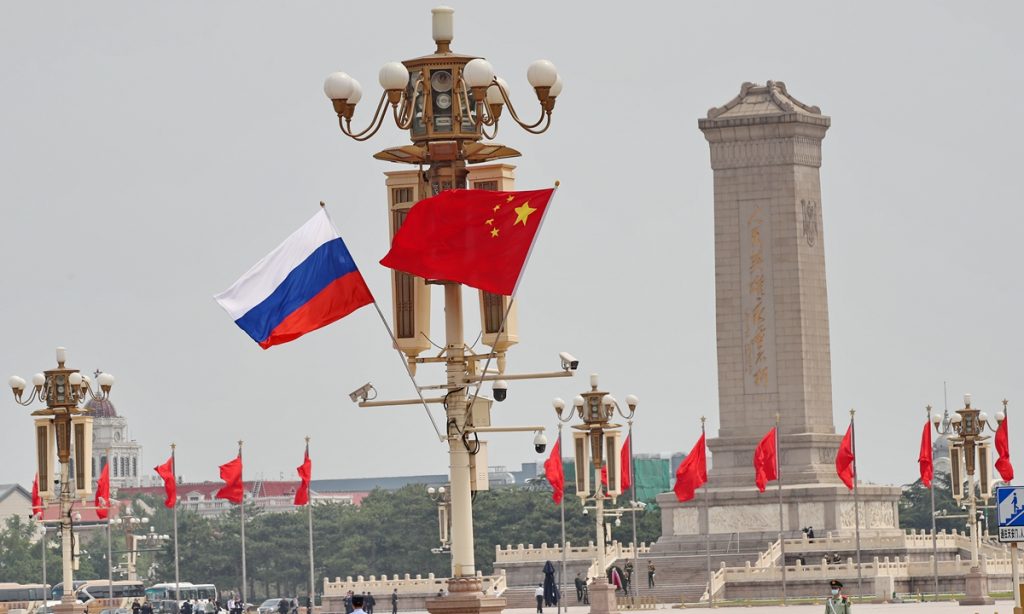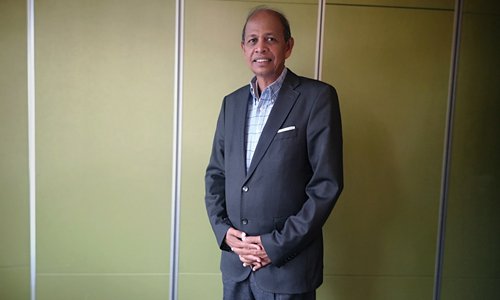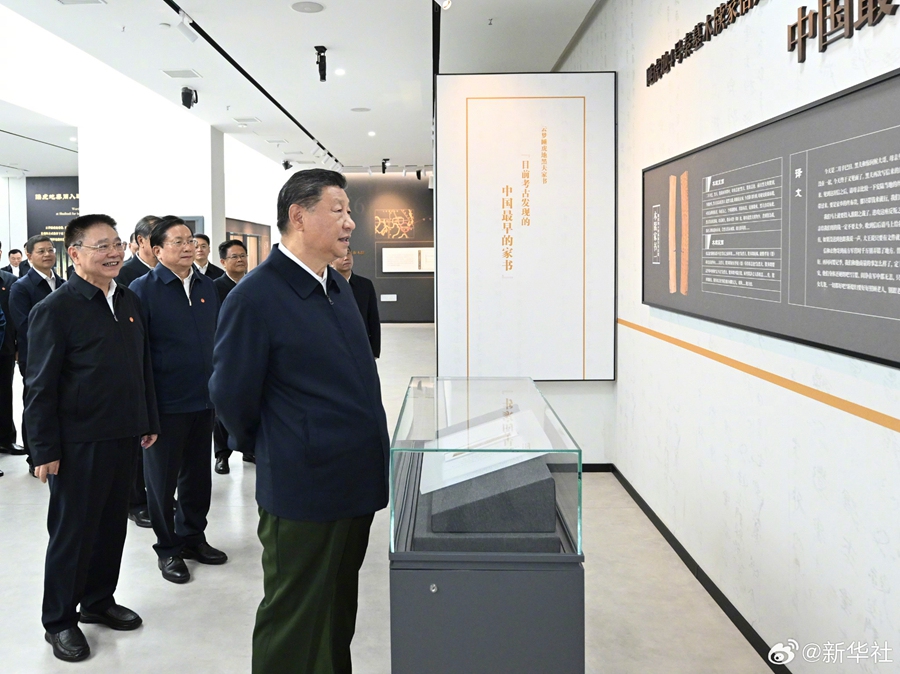China’s experience in driving green development can offer valuable lessons to other countries: UNDP Resident Representative in China

Editor's Note:
The 29th Conference of the Parties to the UN Framework Convention on Climate Change (COP29) is currently taking place in Baku, Azerbaijan, providing an opportunity to accelerate action in addressing the climate crisis that increasingly affects the world today. China has assumed a responsible role in the global fight against climate change and has been ramping up its efforts in new and green energy in recent years. How does UNDP view China's green efforts and transformation? How has the cooperation between China and the UNDP evolved in recent years? Global Times reporter Xie Wenting (GT) spoke with Beate Trankmann (Trankmann), UNDP Resident Representative in China.
GT: What outcomes do you expect from this year's COP29 and what role do you see China playing in the global fight against climate change?
Trankmann: Coming out of the COP16 biodiversity summit in Columbia, COP29 is now a critical opportunity to continue the momentum in responding to our global environmental crises, tackling climate change, and advancing the Sustainable Development Goals (SDGs).
In particular, it will be vital for countries to raise ambition levels including by incorporating biodiversity and social considerations in the next generation of Nationally Determined Contributions (NDCs) through a comprehensive approach backed by actionable plans. Nature and climate are two sides of the same coin, and addressing these challenges collectively, is the only way for the world to keep the Paris Agreement target of 1.5 C within reach. Within this context, as a large and growing economy with sizable emissions, China can play a pivotal role. By pursuing enhanced commitments in its next NDC, China can point the way toward more ambitious targets and accelerated actions globally.
Indeed, China has already had a strong track record in recent years of taking measures toward decarbonization. For example, the government's dual carbon goals to peak carbon before 2030, and reach carbon neutrality before 2060, as well as its announcement three years ago to stop investing in new coal power plants overseas are important steps. In addition, on climate finance, China has shown leadership with China's domestic climate finance mobilization accounting for 51 percent of all domestic climate finance globally.
Moving forward, it will be important for China to continue its work to reduce emissions and make green investments. Besides advancing its own low-carbon transformation, China's experience in driving green development can also offer valuable lessons to other countries including through international development cooperation and exchanges. When demand-based, and aligned with the SDGs and international best practices, China's global engagements can provide financing and support for partner countries in adopting sustainable approaches, which can contribute to putting the world on a low-carbon trajectory.
GT: In terms of green cooperation, what initiatives are being discussed or implemented between China and UNDP to promote sustainable practices? How can these initiatives be expanded to include other countries?
Trankmann: The low-carbon transition and green development are top priorities for UNDP's partnership with China. Our joint efforts have seen a wide range of projects and initiatives that have aimed to advance this mission in a variety of ways including informing policy, exploring cutting-edge low-carbon technologies, and directing increased financing toward climate action.
For example, UNDP is working with the Ministry of Science and Technology and others in developing China's hydrogen and fuel-cell industry, as a green transportation solution. The work to commercialize hydrogen-based clean energy transport is ongoing in eight Chinese cities. As part of these efforts, we supported the establishment of a vocational college in Foshan, South China's Guangdong Province, which provides education and training for hydrogen industry workers. The college has trained over 400 students since 2021, helping to prepare people for the future of work, and ensure that pathways to a low-carbon future are inclusive, with new opportunities accessible to everyone. A total of 30 percent of trainees are women - the first women being trained for the hydrogen industry in China.
In directing financing towards sustainability, UNDP has helped to support China, including by providing technical input on the first pilot on social and sustainability bonds launched by the National Association of Financial Market Institutional Investors, opening new opportunities for sustainable finance in the Chinese market. In the last three years, since its launch, a total of $259 million was issued under this initiative.
In addition, in 2023, our SDG Investors Map initiative identified 18 SDG-aligned investment opportunity areas in China worth over $280 billion by 2026. The opportunities are focused on renewable energy and the circular economy, both central to China's goal to reach carbon neutrality.
Looking ahead, we will continue working to advance SDG progress at the local level and accelerate the low-carbon transition in cities while also addressing social and economic issues. In particular, we are looking to support initiatives in several of China's 11 National SDG Demonstration Zones. For example, in Shenzhen, we established an innovation lab earlier this year focusing on sustainable development in megacities, and we also expect to work with the city of Ordos, Inner Mongolia Autonomous Region focusing on renewable energy and green hydrogen.
Finally, the climate emergency our world faces cannot be solved by any one country alone. That is why, through these and other initiatives, UNDP works to leverage our experience in sustainable development and global network across 170 countries to share knowledge and insights between China and other countries. In particular, through South-South Cooperation, UNDP can help to facilitate exchanges between China and partner countries, providing guidance on alignment with the SDGs and climate goals.
GT: What role do you see being played by emerging technologies in achieving sustainable development in China and globally? How do you evaluate China's investment efforts in renewable energy and how do these efforts impact national and global green development?
Trankmann: In China, the country's green transformation has been heavily driven by technological innovation. In 2023, clean energy sectors were the largest driver of China's economic growth, accounting for 40 percent of the expansion of its GDP. In the mobility sector for instance, in 2009, fewer than 500 electric vehicles (EVs) were sold in China. In 2023, there were over 8 million new EV registrations, and today one out of every two vehicles sold in China is either electric or a hybrid.
China is indeed also a world leader in renewables such as solar and wind, accounting for nearly a third of renewable energy installed globally. Non-fossil fuel sources now account for more than half of its total energy generation capacity, meeting the central government's target two years ahead of schedule.
However, there is still room for further progress, and it will be critical to continue building on these achievements to realize the SDGs and climate targets. For example, as in all countries, there are challenges in integrating renewable energy sources into the electricity grid, with renewables accounting for a third of actual electricity output in China. Greater investments in grid infrastructure and energy storage, as well as further reforms in China's power market are important to address these challenges.
In addition, while emerging technologies offer great potential, as China has shown, it will also be critical to ensure that everyone can benefit from these advancements equally. In the field of artificial intelligence (AI) for example, AI-powered solutions can be a great development enabler, especially in critical areas like climate and healthcare, but only if they are developed and deployed responsibly with appropriate governance and safeguards in place. If not, they can also work to exacerbate divides and deepen inequalities both within, and between countries.
At the UN Summit of the Future held in September, world leaders adopted the Pact for the Future, committing to take urgent actions toward achieving sustainable development and addressing global challenges. As part of this pact, the Global Digital Compact was agreed to - a comprehensive framework for global governance of frontier technology and AI. This framework recognizes the critical role that emerging technologies play in advancing sustainable development, as well as the potential risks they present.
Moving forward, given China's position as a global pioneer in emerging technologies and cutting-edge innovations, its knowledge and experience will continue to be vital to inform discussions on global governance and the regulation of frontier technologies, and how they can be harnessed for positive development impact.
GT: How has the partnership between China and UNDP evolved over the years, from when the organization first started working in the country to the present day?
Trankmann: This year, UNDP is celebrating its 45th anniversary in China. When we first established our office in China in 1979, our focus was on tackling poverty, improving agricultural production, modernizing industries, and introducing new technologies, including some of the very first computer systems.
Over four and a half decades, China has experienced remarkable development progress. Since UNDP began its Human Development Index in 1990, China has been one of only four countries to move from "low" to "high" levels of human development. China has also lifted over 770 million people out of poverty, an incredible achievement, and one which UNDP has been privileged to support.
As China has evolved, so has UNDP. Since 2015, our partnership with China has been guided by the SDGs, and has seen an increased focus on environmental protection and low-carbon development in an effort to address climate change. This has also been in line with China's 14th Five-Year Plan (2021-25), which has placed a greater emphasis on green development and the reduction of greenhouse gas emissions.
Looking ahead, China, and the world, will have to navigate new challenges, including balancing climate commitments, energy security, and socio-economic concerns. Working together with our partners, UNDP will continue to assist China in integrating the SDGs into development decisions, and inform China's international development cooperation engagement to advance global progress on sustainable development.
GT: There are many unstable factors in today's international community that may impact the global sustainable development process. What is your perspective on this situation? How will UNDP respond to the variety of variables in the future?
Trankmann: Sustainable development today does indeed face formidable challenges and unstable factors around the world. The COVID-19 pandemic set development progress back by years, and global conflicts, accelerating climate change, and worsening environmental degradation are all existential crises that threaten the future of humanity and our planet.
All of this has contributed to a worrying lack of progress on the SDGs. Since they were launched in 2015, only 17 percent of SDG targets are on track, with many stagnating or even regressing. In the Asia-Pacific region, at the current rate, it will take until 2062 to achieve the SDGs - more than three decades too late.
However, despite the troubling situation, there are also optimistic signs. In the Peoples' Climate Vote 2024, a global survey carried out by UNDP with the University of Oxford, people in 77 countries, representing 87 percent of the world's population, were asked about their views on climate change. Four out of five people globally, or 80 percent, want their governments to take stronger action to tackle the climate crisis. In addition, 86 percent want to see their countries set aside geopolitical differences and work together on climate change. This is clear evidence that at the individual level, people are invested in the future of our world and are calling for action to be taken to ensure that it can continue to thrive.
At the global level, there have also been positive developments. The Pact for the Future represents a pledge from countries around the world to overcome differences, and work together to respond to shared challenges and safeguard our collective future. While there are many who might question multilateralism amid the many issues our world currently faces, this global pact, alongside the consensus that we aim to build through the ongoing COP29 conference, is a reaffirmation of just how fundamental international cooperation is to addressing the existential crises of our time.
As the lead development agency of the United Nations, UNDP is committed to building consensus, facilitating multilateral cooperation, and working together with all countries to ensure that progress toward the SDGs is reignited and that the Pact for the Future is realized. In carrying out this goal, we understand that there is a great deal of uncertainty and unpredictable variables, and sometimes development is indeed a process of two steps forward, one step back, but this is all the more reason why we are focused on helping vulnerable communities, both in China and around the world, to strengthen their resilience and their ability to buffer against crises and setbacks.
